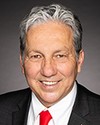In Peter Ballantyne, we only have the home and continuing care. We had done a lot of work trying to get a long-term care facility on reserve, even a downsized one, so that we could maintain some assisted-living facility or something like that, because there's no support funding, no operational funding, or maintenance funding for that within the policy envelope or the budget envelope within that home and continuing care package. Facilities are part of it. You keep people at home or as close to home as possible.
The other thing is the non-insured capital benefits. They're limited in what they provide as well. A lot of the at-home maintenance and renovation of access, even the rails on the houses, those kinds of things are not possible. Families are really struggling to maintain their elderly at home with even the types of beds that an elderly person needs to pull themselves up, or even the lifting things, especially when they're immobile. There are a lot of issues.
As I said, dementia care is an area that really needs to be looked at, because it's growing in our communities, and it's really at that frail elderly stage. Even in our band, just within our community, there are four of them in the personal care home who we would have wanted to maintain at home. It's usually the last resort that puts people in long-term care home facilities away from home. If you look at the Canadian stats, that's also what happens with Canadians in general. People generally don't go to these long-term care facilities unless it's a last resort because they're medically at risk. The same with—



